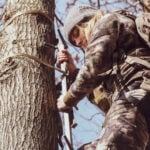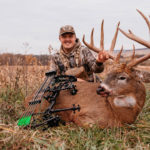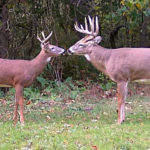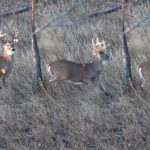I love the challenge of hunting big woods bucks and I also love the peacefulness. There is nothing better than hiking a mile or two back into the middle of nowhere in the morning darkness and then waiting for the sun to rise.
As you wait for the first morning light you are listening for the sounds of a deer walking in the distance and all you hear is nothing but silence.
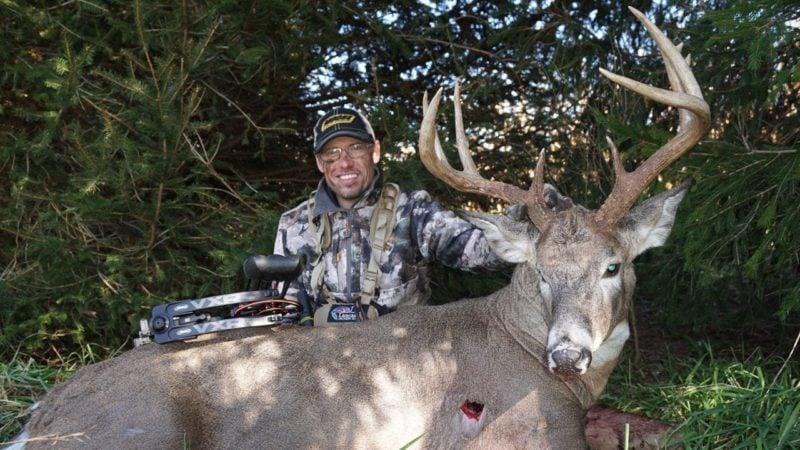
No car noise, no dogs barking, no farm equipment running, nothing but the silence of the morning that is about to begin.
You listen again, there is now a faint light in the morning sky, a branch breaks, and here he comes the ghost you have hunted so hard for since the season ended last year is now heading your direction. Until you experience a morning hunt like this you do not know what you are missing.
The thrill of hunting a big woods buck that is four, five, six years old or older and harvesting him with a bow, it just doesn’t get any better than that in my opinion.
He may not be the highest scoring buck you have taken with a bow but he will be on of the most wary and hard earned trophy buck you will every take.
With the number of wolves today in most northern states and Canada this old veteran has been hunted every day of his life so he cannot afford to make many mistakes, neither can you. Here are a few tips on what I have found out after many years of chasing these northwoods ghost.
I do as much scouting as I can especially in the spring. I feel one of the best areas to harvest a mature northwoods buck is along one of his travel routes between his bedding and feeding area.
Along this travel route I am looking for 2 or 3 key locations where as many things as possible are in my favor. When I am scouting and I find the big buck sign I am looking for, I follow the sign to his bedding and feeding areas.
Keep in mind the feeding areas can change from year to year because one year an oak ridge may have acorns the next year it may not. The years that there may not be acorns the deer will then do most of their feeding in the low land areas.
This is not like hunting farm country where the food source locations are in the same general area each year. In the northwoods a deer’s food source may change by a mile or two from one year to the next because of many factors.
Once I follow the sign and find the bucks bedding area I have now put together a major portion of the puzzle. Keep in mind that the distance between his bedding area and feeding area may be a mile or more.
Once I find the bucks bedding area I now look for his exit routes in and out of this bedding area, always keeping in mind the prevailing wind direction. Once I have located his routes in and out of the bedding area now I follow his travel route towards the feeding areas. As I follow the bucks travel route I am looking for the locations where this buck is the most vulnerable.
I want these locations to be as close to his bedding area as possible but not to close to spook him out of his bedding area. To put all of this together may take several days of solid scouting time. I feel you need to put in as much time scouting as possible.
You need to know the area the buck is living in as well as he knows it. Because of all the scouting I did early one spring, which helped me know the area so well, I was able to harvest this buck.
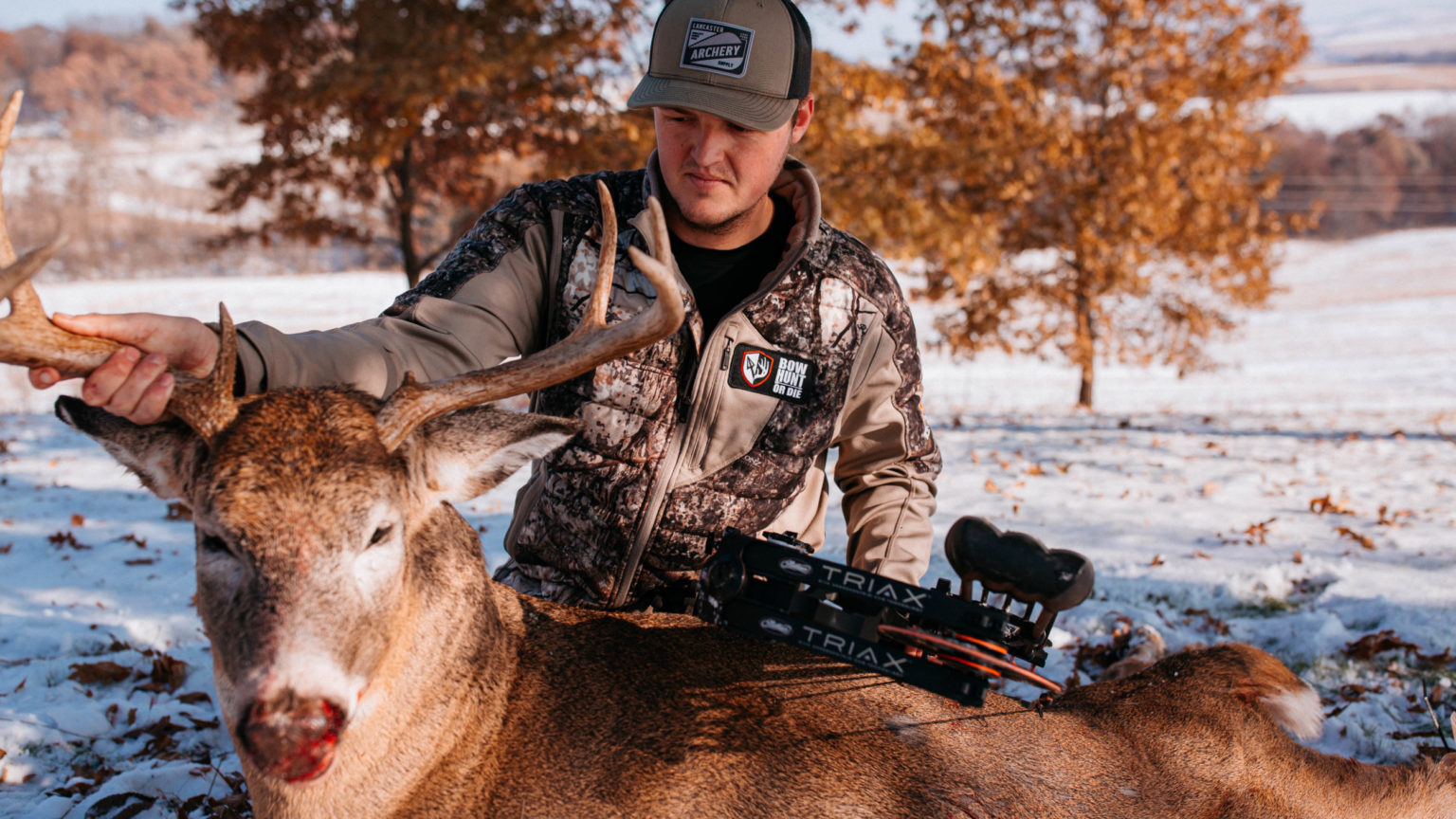
Just before the peak of the rut, I spotted this buck while driving down the road near one of the areas I was hunting. I knew by the direction the buck was heading he would more than likely want to go around an open area and stay in a more wooded area along an old beaver pond.
The edge of the old pond would provide him with the best cover. I jumped out of my vehicle and took off on a dead run toward the pond. When I got to the backside of the beaver pond I spotted 2 large fresh rubs on a couple trees along the pond edge.
I thought the buck I had just spotted might have made these rubs. I quickly found a couple small pines to get behind and set up on the ground with the wind in my favor.
If the buck had continued to travel in the direction I thought he was headed I should be able to see him. I had been standing there only about 5 minutes when I spotted him coming in my direction.
A couple minutes later I had harvested a 130” class 8 pointer that field dressed 232lbs. Because of all the scouting I had done that past spring and a little luck I was able to harvest this mature whitetail buck.
The main thing I am looking for along the bucks travel route between the bedding and feeding area is a location where the buck is traveling in a north-south direction for a distance of a 100-150 yards. This may sound easy enough but believe me it will not be as easy as this sounds.
The reason I look for a location where he is traveling in a north-south direction is because the prevailing winds are usually from a westerly direction. By placing my stand on the east side of the bucks trail will keep the wind in my favor.
Once I have located the locations where the buck is traveling in a north-south direction I then look for some type of travel barrier in these locations that would be 40-50 yards east of the trail the buck is traveling.
This barrier could be a pond, river, open marsh, steep bank, down trees anything that would keep deer movement downwind of my stand to a minimum. Finding some type of barrier may not always be possible so then I will look for an area that has very little deer activity downwind of my stand.
The main thing I am looking for here is to keep from having deer downwind of me. Sometimes if I cannot find a natural barrier to block the deer from traveling downwind of my stand I will create my own barrier in the spring by piling old down trees, logs, branches etc.. whatever I can find.
One of the most important things I believe when hunting these northwoods bucks is being able to hunt them without being detected.
If I am spooking deer by having them wind me or spooking them on a regular basis getting in and out of my stand the odds of seeing the ghost I am after will not be in my favor. That is why I am not always hunting in an area with the most sign. If hunting that sign means I will be spooking deer on a regular basis I do not hunt it.
Once I have found what I feel are the best areas that will give me the best chance to harvest the buck, the next step is to be able to get in and out of my stand locations without being detected. Now I look for the best route in and out of my stand. This may not always be the shortest route but the route in and out will need to avoid the feeding and bedding areas.
I cannot stress enough that you need to do whatever possible to avoid spooking deer. Once I have chosen my route in and out of my stand I will clear a trail to my stand as to eliminate making any noise while walking in and out of my stand locations especially the last 100-150 yards.
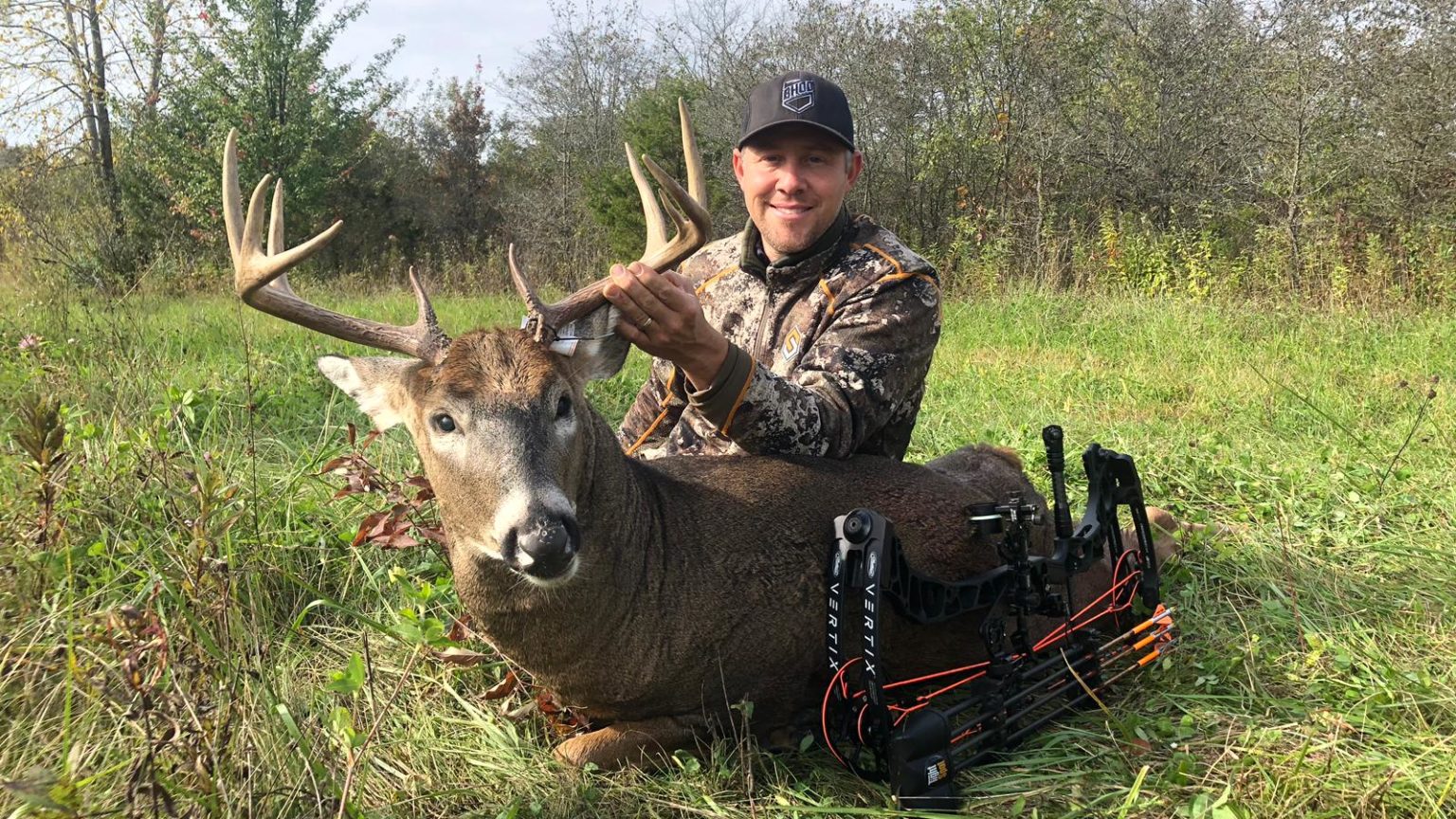
This is why I prefer to hunt the travel corridors between the bedding and feeding areas most of the time. I feel this is the easiest area to hunt the buck I am after without being detected.
When you are hunting the food source and bedding areas I feel you spook to many deer getting in and out of your stand.
The last step once I have chosen what I feel is the area that the buck is most vulnerable is to clear out a couple trees in each area for stand placement.
As I stated before I will normally be on the east side of the trail I will be hunting because of the prevailing winds. But I like to clear a stand location also on the west side of the trail just in case there are a couple days of easterly wind during my hunt.
Most of the time I will only have a week to hunt so I have to be prepared for changing wind directions so I do not waste a days hunt. I normally do one of two things when it comes to placing my stands. A week or two before my hunt I will hang a couple stands in the trees I cleared out if possible.
Generally I will just go in and hang my stand the first afternoon of my hunt. This is why I only use Lone Wolf treestands and sticks.
The main stands I use now are the Assassin or the Assault. They are quiet and lightweight and easy to pack in on those long walks to your stand.
If the wind happens to change direction on me during my hunt it is not that big of a deal to take my Lone Wolf stand and sticks down and move them over to the other tree I had cleared out ahead of time. In 15-20 minutes I am back to hunting with the wind in my favor again!
Let’s recap a few pointers to keep in mind when looking for the perfect spot to harvest that north woods buck you are after.
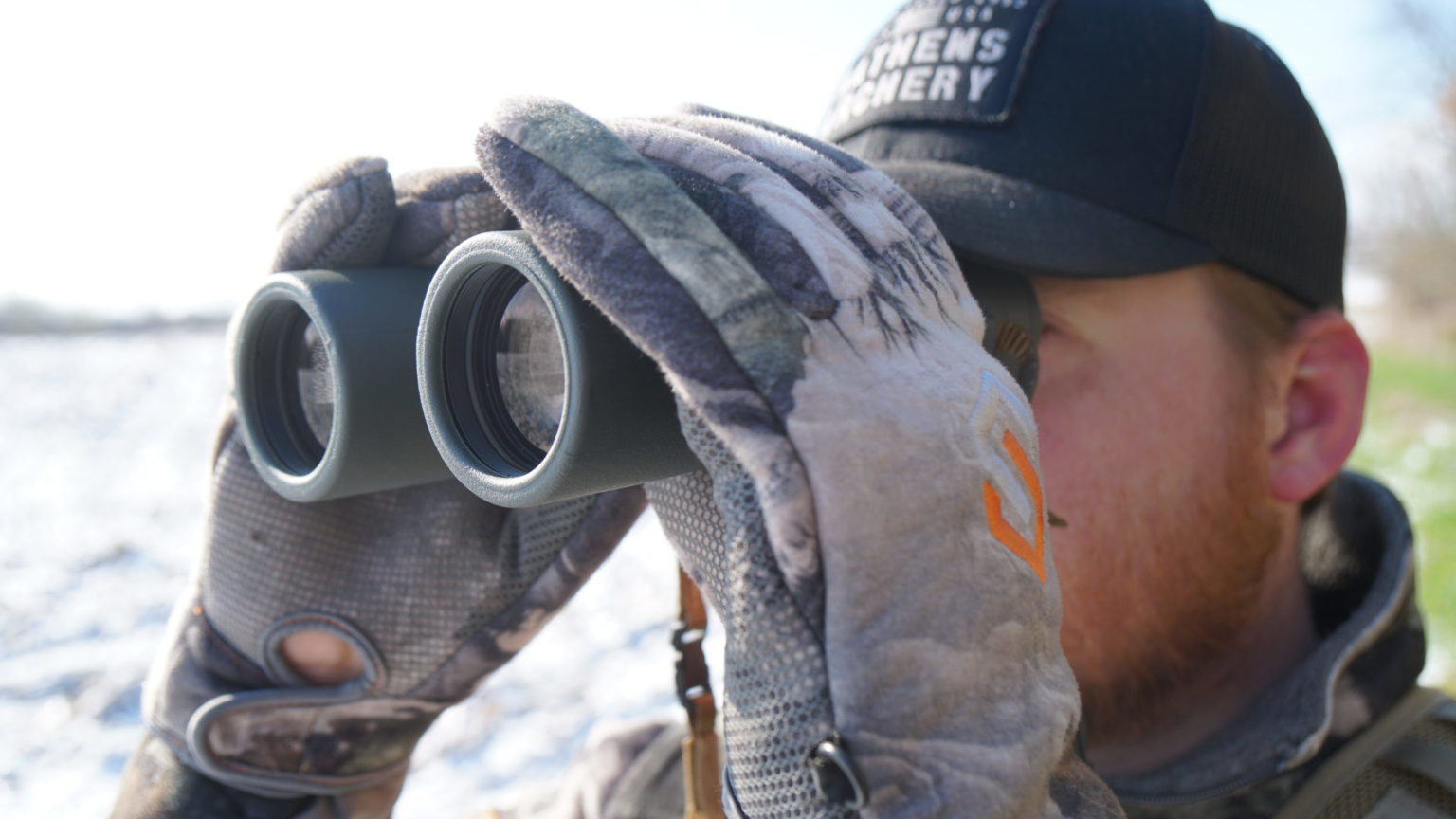
1. Always keep in mind you are looking for where the buck is traveling in a north-south direction.
2. Look for barriers east of your stand location or where there would be very little deer activity downwind of your stand location. If none are available make one.
3. Find a route to your stand that you will be the least likely to spook deer. Always be very quiet going to and from your stand even if you do not think there is deer in the area. Your stand choice will need to be lightweight and quiet.
4. Keep in mind the areas where you find most of the buck sign may also be the hardest area to harvest a mature buck. If he is spending that much time there making all that sign that may mean that this location is probably an area that you will not be able to get to without him knowing you are there. This type of spot may best be saved as a last resort.
5. Where I place my stands more times than not there may not be a great deal of sign there but it is the area I know he is most vulnerable when traveling from one area to another.
6. These big bucks are not traveling down the same trails most of the does and young bucks are using. The big buck will usually be on his own trail that will intersect the doe’s trails on occasion. So the most heavily used trails will not be the ones the big bucks will be using on a regular basis.
7. Once you have gone through all of this work to select your stand location BE PATIENT!!!. If you do not see a deer for a day or two, just be patient believe in yourself and all the scouting you did. These northern bucks travel a big area so it may take a day or two for him to come by you. What has worked the best for me is to hunt the stand location I have chosen a week or two prior to the peak rut because these big bucks are still on somewhat of a pattern during that time. I will then hunt this stand location 4-5 days in a row, morning until dark before I move locations.
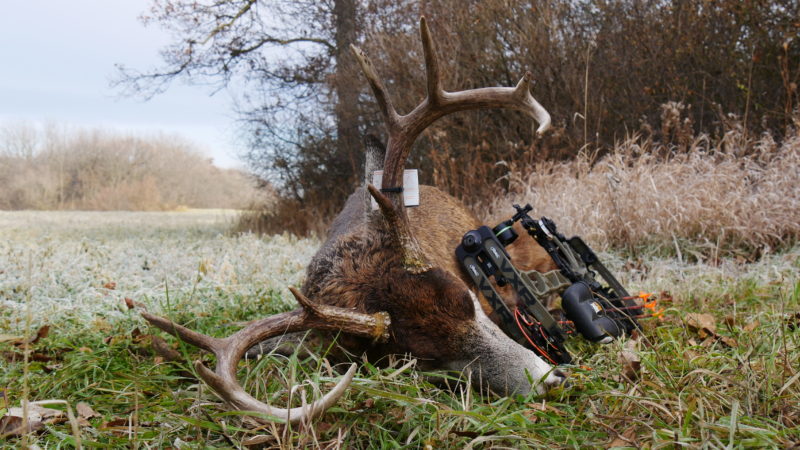
To do all that I mentioned above will take a lot of time and effort but to consistently take big bucks in big woods area it will take a lot of work and a lot of patience but in the end it may pay off on a buck of a lifetime.
No matter where you hunt big bucks it will always take a lot of time and effort to be successful. What makes it more difficult; in my opinion when hunting these northwoods ghosts is that you very rarely see them. There are no fields or open areas to watch them from a distance.
They seem to always be in thick cover. You need to be in the woods with them one on one, so most of the time all you can do is read the sign and hope when you do see him he is what you are after. This type of hunting is not for everyone. But for some hunting these northwoods ghosts is a dream come true.
So stay after that buck the whole season if possible even after the rut, because sometimes your dreams and prayers are answered during the final days of the season.
Remember be patient, take in all the beauty and peacefulness the northwoods has to offer and pray for a little luck to come your way when that buck you have hunted so hard for finally heads down the trail you knew he would eventually be on.

